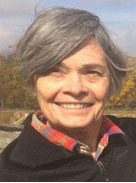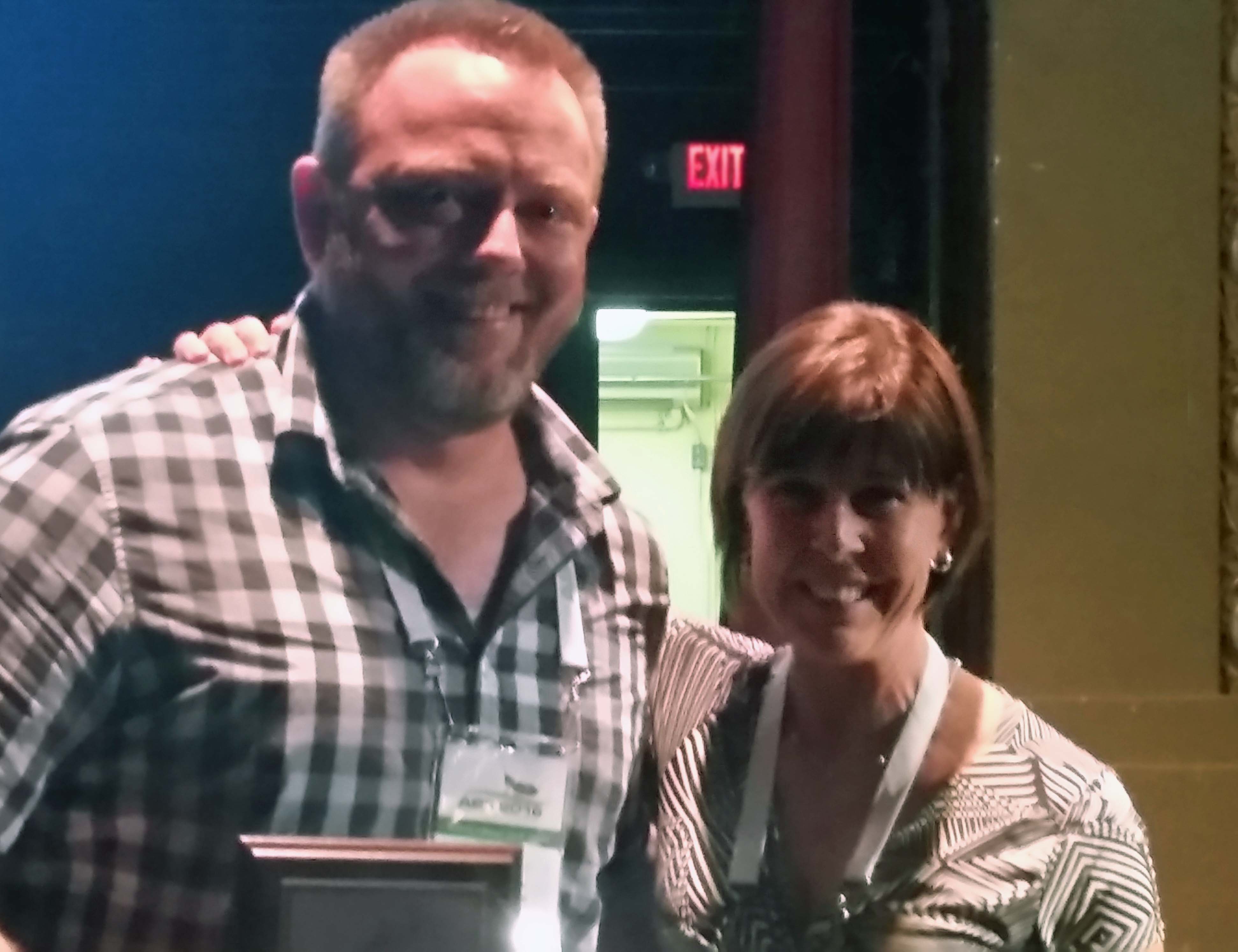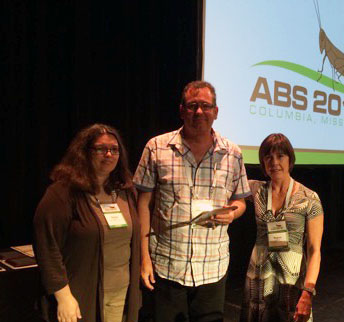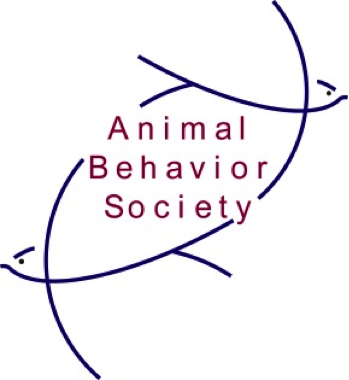2016 Career Awards
Distinguished Animal Behaviorist Award
The Distinguished Animal Behaviorist Award is the Animal Behavior Society´s most prestigious award and recognizes an outstanding career in animal behavior. Dorothy Cheney (University of Pennsylvannia) and Jane Brockmann (University of Florida) have both been granted the award in 2016.

Dorothy Cheney is a recipient this year of the Distinguished Animal Behaviorist award, in honor of her many contributions to the fields of animal communication and primate social behavior. Dorothy did her postgraduate work at the University of Cambridge under the direction of Robert Hinde and her postdoctoral research in Peter Marler’s group at the Rockefeller University. From 1981 to 1991 she was on the faculty of UCLA before moving to the University of Pennsylvania, where she recently retired as Professor of Biology. Throughout her career, Dorothy has had a strong relationship with the Animal Behavior Society, attending annual meetings of the society, contributing more than thirty papers to the society’s journal, and serving an extended term as an Editor for the American office of the journal.
Dorothy is especially known for her work on animal communication, done largely in collaboration with her husband, Robert Seyfarth. Particularly notable here are two classic papers on semantic communication in vervet monkeys published by Seyfarth, Cheney, and Marler in 1980. One of these papers appeared in Animal Behaviour and was recently recognized by the Editors as one of the twelve most influential papers published in our journal during its 60-year history. In these papers, the authors describe a playback study of the alarm calls of vervet monkeys, confirming that vervets possess at least three categories of alarms specific to different classes of predators, and demonstrating that the monkeys give different and adaptive responses to each category of alarm when alarms were played in the absence of the predators. These results were the first strong evidence that non-human vertebrates use signals to refer to things external to themselves, and as such revolutionized our understanding of the cognitive side of animal communication. Cheney and Seyfarth went on to study many other aspects of communication, such as vocal comprehension learning, individual recognition, and deception. As a consequence of this body of work, Cheney and Seyfarth have come to be recognized as among the pre-eminent leaders not just in primate communication but in the field of animal communication as a whole.
Dorothy has also made important contributions to the study of primate social behavior. These contributions mainly result from two long-term field studies conducted by Dorothy and Robert, first on vervet monkeys in Kenya and then on baboons in Botswana. In the area of social behavior, Dorothy is particularly identified with the idea that long-term social relationships, including ones that do not involve kinship, have an important effect on individual fitness in primates. Dorothy has also been an important advocate of the social intelligence hypothesis, the idea that the need to navigate complex social relationships has been an important factor in the evolution of increased cognitive abilities.
In recognition of her distinguished career, Dorothy was recently elected to membership in the U.S. National Academy of Sciences, one of the most notable distinctions that can be achieved by a U.S. scientist. – William A. Searcy.
 This award recognizes Jane Brockmann´s (pictured on the left with past-president Regina Macedo) highly innovative and sustained contributions to the study of animal behavior, including work that resulted in the understanding of alternative reproductive tactics (ARTs), now a recognized concept in the field. Through the in-depth investigation of life history and behavior of horseshoe crabs, Jane broached a broad array of topics, including mating behavior, nest-site selection, sperm competition, chemical communication, and sex ratios. In addition to being past President of the Animal Behavior Society, she also held positions as Editor of Ethology and Advances in the Study of Behavior, and has been awarded several honors, including the University of Helsinki Medal and the ABS Distinguished Service Award. Jane received her Ph.D. at the University of Wisconsin in 1976 and is currently Emeritus Professor at the University of Florida.
This award recognizes Jane Brockmann´s (pictured on the left with past-president Regina Macedo) highly innovative and sustained contributions to the study of animal behavior, including work that resulted in the understanding of alternative reproductive tactics (ARTs), now a recognized concept in the field. Through the in-depth investigation of life history and behavior of horseshoe crabs, Jane broached a broad array of topics, including mating behavior, nest-site selection, sperm competition, chemical communication, and sex ratios. In addition to being past President of the Animal Behavior Society, she also held positions as Editor of Ethology and Advances in the Study of Behavior, and has been awarded several honors, including the University of Helsinki Medal and the ABS Distinguished Service Award. Jane received her Ph.D. at the University of Wisconsin in 1976 and is currently Emeritus Professor at the University of Florida.
Here are some of the things that one of her nominators, Zuleyma Tang-Martinez, had to say “Jane has excelled in producing Ph.D.s. Overall, Jane had 28 graduate students and many of them have gone on to become respected colleagues and scientists in their own right – who, in turn, have gone on to produce more animal behaviorists. There are many researchers in animal behavior who have outstanding research records and a large number of publications, so one might ask what makes Jane stand out from the others? I would suggest that there are at least three things that distinguish her: 1. Her research has been ground-breaking, innovative, and has had an extended and lasting effect on the development of our field (e.g. ARTs, EES). 2. Her exceptional contributions have been both on the empirical side, as well as on theoretical and conceptual aspects of animal behavior. Many researchers excel in one of these areas but not in the other – Jane moves with ease between empirical and theoretical aspects of behavior. 3. Jane’s contributions are not limited to doing great research, publishing a large number of papers, or producing great students (even though she could easily have done this and probably published even more). Instead, Jane talks the talk and walks the walk – she has devoted her life to the advancement of animal behavior by serving the ABS and its members in a myriad of ways that took time, energy, dedication, and passion. She also has been a model ABS citizen in terms of public outreach and dissemination of the importance of animal behavior to the general public and K-12 teachers. Even though she has already received the ABS Distinguished Service Award, I think her service contributions are so totally extraordinary and sustained (right up until the present), that this also should be taken into account when granting the DAB award. In summary, H. Jane Brockmann is a giant in our discipline, who is internationally recognized and highly respected as an “elder statesman” (or stateswoman!) in animal behavior - who has helped, for more than 40 years, to shape the direction of our field. Her varied and exceptional contributions - in research, service, and teaching - merit special recognition from the ABS.
In recognition of Jane’s exceptional career and contributions, Jane has also been honored by many others. In 1992, she received the University of Helsinki Medal; in 2008, she was elected a Fellow of the AAAS; and in 2011, she was honored with the Myrle E. and Verle D. Nietzel Visiting Distinguished Faculty Program Award at the University of Kentucky. All of these tributes acknowledge and celebrate her scholarly excellence and all of her many other contributions to science.
Exemplar Award
 The Exemplar Award recognizes a major long-term contribution in animal behavior. The 2016 Exemplar Award goes to Janice Moore (Colorado State University).
The Exemplar Award recognizes a major long-term contribution in animal behavior. The 2016 Exemplar Award goes to Janice Moore (Colorado State University).
Janice Moore (pictured on the left saying a few words at the awards ceremony) is being honored for her ground-breaking work on the effects of parasites on the behavior of their hosts. Her research focused on the acanthocephalan worms and how they can alter the behavior of pillbugs, leading to their predation by starlings. Her painstaking investigations eventually led to the publication of her insightful book, Parasites and the Behavior of Animals, published by Oxford University Press in 2002. This book had a transformative effect on the entire field of host-parasite interactions. Janice received her Ph.D. from the University of New Mexico in 1981 and is currently a professor at Colorado State University.
In the words of one of her nominators, Joan Strassman: “Janice has done something that few can claim: she started an entirely new field, that of how parasites influence host behavior to their own ends. It may be hard to believe that this field has a clear beginning with one visionary biologist, in this day when it seems our behavior is so controlled by our parasites, our gut biota, and our diseases that there may be little left we can call our own. Janice pretty much single-handedly began this field.
Janice was an undergraduate at Rice University under a famous parasitologist, Clark Read. He did not study behavior, but encouraged Janice’s interest in fusing behavior with parasitology. At the time there were a few examples of parasites that change the behavior of their hosts, but these were considered anomalies, not something more than a curiosity on the side road of evolution and behavior. Janice’s own work is on acanthocephalan worms. Her 1983 paper showed definitively that the worms altered the behavior of pillbugs so that they were more easily preyed upon by the final host starlings. Paper after paper followed as Janice pursued the importance of demonstrating and founding this new field. Janice has not only done her own work. She has been a master synthesizer. If the Exemplar award were to be for one important contribution, for Janice it would be her masterful book, Parasites and the behavior of animals, published by Oxford University Press in 2002. This book is the place to turn for information on this crucially important topic.”
Quest Award

The Quest Award recognizes an outstanding seminal contribution in animal behavior. Jan Randall (San Francisco State University) is the recipient of the 2016 Quest Award.
The Quest Award celebrates Jan Randall´s significant and revolutionary contributions to the understanding of mammalian sociality and communication. Her studies focused initially on solitary rodent species in the earliest stages of social evolution, which could thus be considered precursors of higher levels of social evolution. Her work led to the identification of “female kin clusters” as a probable behavioral antecedent for higher levels of sociality in most mammalian species. Jan´s seminal contributions also include studies of seismic communication in rodents. Jan received her Ph.D. in 1977 from Washington State University and is currently Professor Emeritus at San Francisco State University.
Here is what one of her nominators, Zuleyma Tang-Martinez, had to say about her: “Jan has two closely related major contributions that have helped to revolutionize the study of mammalian sociality and communication. Seminal Contribution 1: Social organization in solitary mammals: When Jan began studying social evolution in mammals almost everyone else was particularly interested in highly social species with complex social structures. Jan, on the other hand, felt that it was critical to also look at the evolution of sociality by studying the less social end of the social continuum to understand the earliest stages of social evolution - these species might be considered precursors of higher levels of sociality and might provide the most useful clues about how higher levels of social structures evolved. In the late 1970s, Jan launched her research by studying what were at the time considered to be “asocial” kangaroo rats in the south-western USA. She did what had never been done before: she spent long and arduous nights in the field, directly observing the kangaroo rats and their behaviors. As a result, Jan was able to demonstrate that kangaroo rats do have a social structure, but that there is great flexibility depending on environmental conditions. Specifically, during times of high densities, females are philopatric and live in dispersed female kin groups, with female relatives being nearest neighbors. Initially based on meticulous behavioral observations and monitoring, Jan subsequently confirmed this finding with microsatellite DNA analyses. Thus, Jan was among the first (along with Gail Michener) to identify “female kin clusters” as being the behavioral antecedent for higher levels of sociality in most mammalian species. She was a pioneer in the study and understanding of simpler levels of sociality. Based in large part on Jan’s research, the term “asocial” has mostly been dropped from the mammalian literature and the preferred term is now “solitary” for species with simpler social systems.
Seminal Contribution 2: Seismic communication in rodents: Stemming directly from Jan’s research on social behavior in the kangaroo rats and in the great gerbil was her discovery of “footdrumming” as a form of seismic communication. She found that footdrumming outside of burrows was propagated through the air (acoustic communication), but that footdrumming inside burrows was propagated seismically. Jan, once again, was a trail blazer with her studies of seismic communication in rodents. Her work in this area has culminated in a two major and synthetic reviews: 1. “Drummers and stompers: Vibrational communication in mammals”, published in a 2010 book, The Use of Vibrations in Communication: Properties, Mechanisms and Functions Across Taxa (O’Connell-Rodwell, ed);and 2. “Vibrational communication: spiders to kangaroo rats”, published in 2014, in Biocommunication of Animals, (G. Witzany ed). These reviews are truly remarkable in their breadth and depth; they survey seismic communication across all mammals and many other taxa, and cover topics as diverse as the evolution of seismic communication; signal structure, transmission and receipt; functional significance; role of learning in individual discrimination; use of seismic signals as anti-predator behaviors, and multi-modal communication.
Jan is an Animal Behavior Fellow and also just received the honor of being elected a Fellow of the AAAS. This impressive honor recognizes the remarkable impact and excellence of her research on the field.”
Outstanding New Investigator Award

The Outstanding New Investigator Award recognizes an outstanding contribution in animal behavior by a new investigator, no more than 10 years past obtaining a Ph.D. The 2016 Outstanding New Investigator Award goes to Ned Dochtermann (North Dakota State University).
This award was conferred on Ned Dochtermann (pictured on the left with past-persident Regina Macedo) in recognition of his outstanding contributions since earning his Ph.D. in 2009. His publications have provided important insights relative to how researchers should collect, analyze and interpret research data in animal behavior. Additionally, his studies using meta-analyses have provided critical interpretations in both behavioral ecology and evolutionary biology. Ned is currently an assistant professor at North Dakota State University.
Here are some words from one of his nominators “Ned’s work has had a tremendous influence on how we collect, analyze and interpret data in animal behavior. Ned has produced high quality rigorous empirical papers that exemplify his statistical approaches, and he has done meta-analyses that produced very important insights on the interface between behavioral ecology and evolutionary biology. These papers have won major accolades. Most notably, Dochtermann and Dingemanse 2013 was recommended by the Faculty of 1000, chosen by the journal Behavioral Ecology as an ‘Editor’s Choice’, and was awarded the extremely prestigious Frank Pitelka Award from the International Society of Behavioral Ecology. In recognition of his overall achievements, Ned has already been named a National Academies Education Fellow in the Life Sciences.
Ned’s ‘transformative’ effect on the field comes through his leading contribution in bringing Bayesian inference, model choice methods and mixed-effects models into animal behavior. Dochtermann’s papers with Dingemanse and others have played a key role in making them the growing norm in animal behavior. This switch in statistical methods and philosophy changes how we design our studies, how we think about the data we need to collect, how we organize and analyze the data, and how we interpret our results. Perhaps most importantly, the ‘new stats’ lead us to ask new questions. The new stats championed by Dochtermann are providing substantial new conceptual and statistical rigor to the study of these behavioral correlations. Ned and Niels’ key papers provide a widely cited guide to the concepts, new questions and best practices (e.g., sampling designs and sample size requirements) for using these methods. That is, their papers not only guide us to think about numerous other factors that affect mating success (or other question of interest) beyond the classic view of quantifying how individual traits (e.g., morphology) correlate with mating success, but also give us practical guidelines on how to collect and analyze data to examine effects of these factors.
Year after year, Ned produces important, deeply thoughtful papers that shape how we think about and study the evolution of behavior. Ned is deeply rigorous, thoughtful and ego-free in his consideration of data and ideas. His contributions reflect that deep rigor and thoughtfulness. Overall, Dr. Dochtermann has a truly remarkable research profile for someone who has only been an assistant professor for 3+ years. His major leadership role in facilitating what one could say is a once-in-a-lifetime change in how we do our science could easily be enough to justify an outstanding new investigator award. Or, his superb, high rigor, high insight empirical and meta-analysis contributions could by themselves justify the award. The fact that he has done both makes him an unusually strong candidate for our society’s award.”
Penny Bernstein Distinguished Teaching Award

The Penny Bernstein Distinguished Teaching Award recognizes a sustained record of excellent teaching of animal behavior in the classroom or informal education setting. The 2016 Bernstein Distinguished Teaching Award goes to Peggy Hill (University of Tulsa).
A few thoughts on Peggy Hill – 2016 Penny Bernstein Distinguished Teaching Awardee
Written by Daniel R. Howard, Assistant Professor of Ecology, Evolution and Behavior, University of New Hampshire Department of Biological Sciences (and former PSM Hill graduate student)
As a secondary science instructor teaching in a small tribal community in northeastern Oklahoma, I first met Peggy Hill when she reached out with an invitation to visit her field study site to explore ways to integrate her research in insect mating systems and communication into my classroom. From these inauspicious beginnings began a professional relationship that has spanned decades and that has been deeply rewarding; a gift for which I am immeasurably thankful. Years after this first meeting on the prairie, Peggy agreed to serve as my doctoral dissertation advisor, and remains today a valued mentor, close friend, and valued confidante. Over the years I have observed over and again the deep and abiding commitment that she exhibits for teaching and learning, and for extending current research in our field into the post-secondary classroom, to the training of her graduate students, and to the public. In this respect I am firmly convinced that she is a skilled artisan with few peers, and is an exemplary recipient of the 2016 Penny Bernstein Distinguished Teaching Award.
While well-known for her research on cricket behavior, lek mating systems and vibrational communication, Peggy is first and foremost a teacher; her professional trajectory has been defined as such. She began her academic career as a science instructor at Edison High School in Tulsa, Oklahoma, a public school serving a mostly minority student population. After completing her masters degree at the University of Tulsa, she was invited to join the TU team as an instructor in the Department of Biological Sciences, and there received accolades for her teaching effectiveness and for her authentic connection with students. Peggy was then known for (and still is) integrating hands-on and minds-on activities to energize her lectures. After several years she left this position at TU to pursue her doctoral degree at the University of Oklahoma. During her training at OU teaching remained close to her heart and she contributed to undergraduate instruction there, despite being on an external fellowship that did not require this. After completing her Ph.D., she returned to Tulsa in a tenure-track position, and has since risen through the ranks to full professor. She has done so on the equal strengths of her research, her service, and her documented teaching effectiveness and spirit of innovation.
Since I joined the professorate, Peggy and I have chatted often about our thoughts on this challenging, complex and rewarding career field. Despite her many awards for research in behavioral ecology, her recognition for work in broadening participation, and her service to our society, if you ask her to talk about her academic career she will always circle back to her love for the art and science of teaching. She is a tireless advocate for the aspiring learner, especially those that struggle to realize success, and she has made a remarkable difference in the lives of countless students that have been fortunate to spend time in her classroom. Peggy hails from a small unassuming Oklahoma town and embodies the Midwestern ideals that value courtesy, kindness, and hard work; yet as a member of the academy she measures up on a metropolitan scale. She is a wonderful example of the teacher-scholar, and it is with great appreciation that we pause to celebrate her contributions to our society.
ANIMAL BEHAVIOR SOCIETY’S NEWEST FELLOWS
The Animal Behavior Society is pleased to announce the election of six new Fellows of the Society. Each newly-elected ABS Fellow is pictured below with president Emilia Martins and past-president Regina Macedo.
 |
Maydianne C.B. Andrade is a Full Professor and Canada Research Chair (Tier II) Integrative Behavioural Ecology in the Department of Biological Sciences, University of Toronto at Scarborough, Canada. |
 |
Alexandra L. Basolo is a Full Professor School of Biological Sciences, University of Nebraska Lincoln, USA. |
 |
Douglas P. Chivers is a Full Professor and the Rawson Professor of Biology Department of Biology, University of Saskatchewan, Canada. |
 |
Deborah M. Gordon is a Full Professor Department of Biology at Stanford University, USA. |
 |
Molly R. Morris is a Full Professor Department of Biological Sciences at Ohio University, USA. |
 |
Philip K. Stoddard is a Full Professor Department of Biological Sciences at Florida International University, USA. |
